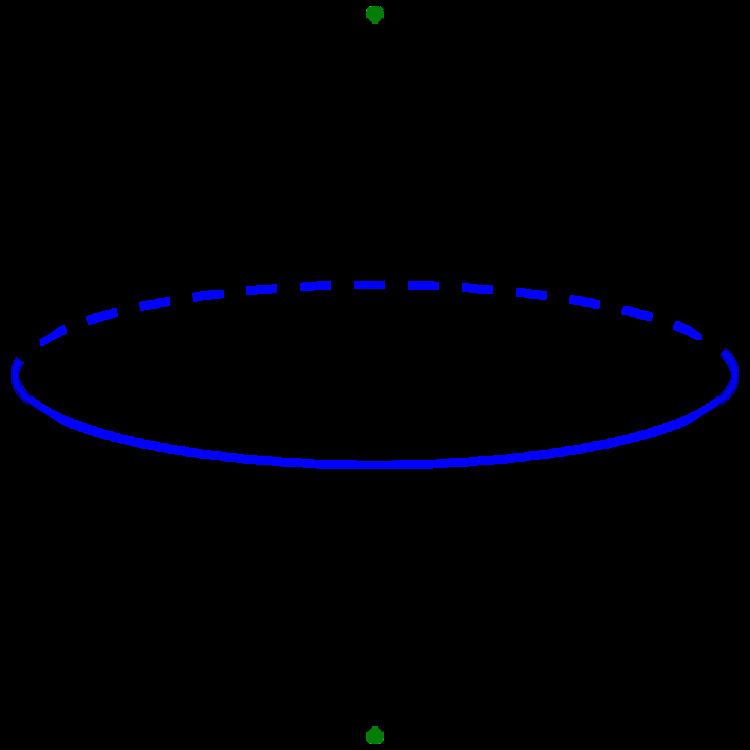 | ||
In differential topology, a branch of mathematics, a stratifold is a generalization of a differentiable manifold where certain kinds of singularities are allowed. More specifically a stratifold is stratified into differentiable manifolds of (possibly) different dimensions. Stratifolds can be used to construct new homology theories. For example, they provide a new geometric model for ordinary homology. The concept of stratifolds was invented by Matthias Kreck. The basic idea is similar to that of a topologically stratified space, but adapted to differential topology.
Contents
Definitions
Before we come to stratifolds, we define a preliminary notion, which captures the minimal notion for a smooth structure on a space: A differential space (in the sense of Sikorski) is a pair (X, C), where X is a topological space and C is a subalgebra of the continuous functions
For a general differential space (X, C) and a point x in X we can define as in the case of manifolds a tangent space
A k-dimensional stratifold is a differential space (S, C), where S is a locally compact Hausdorff space with countable base of topology. All skeleta should be closed. In addition we assume:
- The
( S i , C | S i ) are i-dimensional smooth manifolds. - For all x in S, restriction defines an isomorphism of stalks
C x → C ∞ ( S i ) x - All tangent spaces have dimension ≤ k.
- For each x in S and every neighbourhood U of x, there exists a function
ρ : U → R withρ ( x ) ≠ 0 andsupp ( ρ ) ⊂ U (a bump function).
A n-dimensional stratifold is called oriented if its (n − 1)-stratum is empty and its top stratum is oriented. One can also define stratifolds with boundary, the so-called c-stratifolds. One defines them as a pair
An important subclass of stratifolds are the regular stratifolds, which can be roughly characterized as looking locally around a point in the i-stratum like the i-stratum times a (n − i)-dimensional stratifold. This is a condition which is fulfilled in most stratifold one usually encounters.
Examples
There are plenty of examples of stratifolds. The first example to consider is the open cone over a manifold M. We define a continuous function from S to the reals to be in C iff it is smooth on M × (0, 1) and it is locally constant around the cone point. The last condition is automatic by point 2 in the definition of a stratifold. We can substitute M by a stratifold S in this construction. The cone is oriented if and only if S is oriented and not zero-dimensional. If we consider the (closed) cone with bottom, we get a stratifold with boundary S.
Other examples for stratifolds are one-point compactifications and suspensions of manifolds, (real) algebraic varieties with only isolated singularities and (finite) simplicial complexes.
Bordism theories
In this section, we will assume all stratifolds to be regular. We call two maps
There is also a simple way to define equivariant homology with the help of stratifolds. Let G be a compact Lie group. We can then define a bordism theory of stratifolds mapping into a space X with a G-action just as above, only that we require all stratifolds to be equipped with an orientation-preserving free G-action and all maps to be G-equivariant. Denote by
Connection to the theory of genera
A genus is a ring homomorphism from a bordism ring into another ring. For example the Euler characteristic defines a ring homomorphism
Umkehr maps
Suppose, one has a closed embedding
